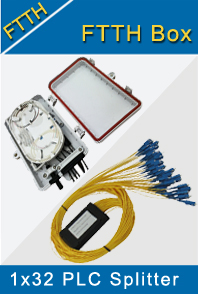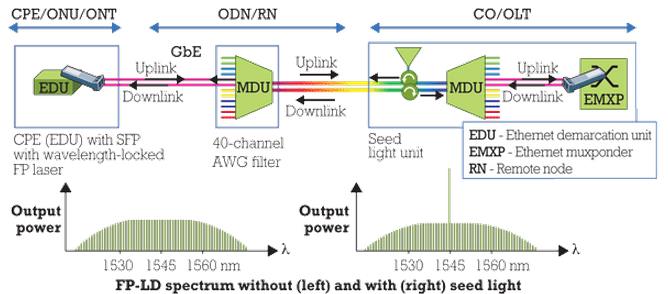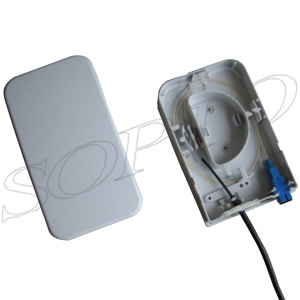-

- Sopto Home
-

- Special Topic
-

- FTTH Knowledge
-

- Why WDM-PON becomes an Optical Option for the Access Network?
FTTH Knowledge
- Solving the FTTH Rollout Problem in Multiple Dwelling Units
- WDM PON Introduction FAQ
- A Simple Overview of Optical Power Meter
- ODN is based on PON FTTH Optical Cable Network of the Device
- Using an OTDR to be an Expert in Fiber Link Testing
- How FTTH Broadband Works?
- Connections among Fiber Terminal Boxes & Patch Cables & Pigtails
- Easy to Install a Fiber Terminal Box
- What is Arrayed Waveguide Grating?
SOPTO Special Topic
Certificate



Guarantee
Except products belongs to Bargain Shop section, all products are warranted by SOPTO only to purchasers for resale or for use in business or original equipment manufacturer, against defects in workmanship or materials under normal use (consumables, normal tear and wear excluded) for one year after date of purchase from SOPTO, unless otherwise stated...
Return Policies
Defective products will be accepted for exchange, at our discretion, within 14 days from receipt. Buyer might be requested to return the defective products to SOPTO for verification or authorized service location, as SOPTO designated, shipping costs prepaid. .....
Applications

Sopto supply the best FTTH solutions for your network!
SOPTO Products
- Fiber Optic Transceiver Module
- High Speed Cable
- Fiber Optical Cable
- Fiber Optical Patch Cords
- Splitter CWDM DWDM
- PON Solution
- FTTH Box ODF Closure
- PCI-E Network Card
- Network Cables
- Fiber Optical Adapter
- Fiber Optical Attenuator
- Fiber Media Converter
- PDH Multiplexers
- Protocol Converter
- Digital Video Multiplexer
- Fiber Optical Tools
- Compatible
Related Products
Performance Feature
FTTH Knowledge
Recommended

Why WDM-PON becomes an Optical Option for the Access Network?
WDM-PON provides the dedicated bandwidth of a point-to-point network and the fiber sharing inherent in PONs. The architecture is somewhat similar to that of EPON and GPON; instead of the power-splitter approach used in TDM-PON architectures, WDM-PON uses an arrayed-waveguide-grating (AWG) filter that separates the wavelengths for individual delivery to the subscriber ONUs (see Figure 1).
Figure 1

Basic WDM-PON architecture
A simple, plug-and-play implementation is based on wavelength-locked or tunable lasers. Self-tuning "colorless" ONUs can be used at the subscriber sites to simplify inventory and spare-part handling.
Colorless optics not only simplify operations, but also reduce deployment costs, since they don't need the expensive wavelength-stability components that traditional fixed and tunable optics require. There are multiple approaches to the colorless ONU technology.
In one approach, the wavelength of the ONU transmitter is controlled by injection of a "seed" signal into the transmitter (e.g., a wavelength-locked Fabry-Perot laser or reflective semiconductor optical amplifier).
The seed signal injected into the transmitter could come from broadband ASE light sliced through the filters in the system or from a DFB laser array.
In a self-seeding version of this approach, the seed light is provided by feedback of broadband light from the transmitter itself. The passive filtering of the seed light in the remote node determines the wavelength of the ONU transmitter.

In a different approach, the colorless ONU contains a singlemode wavelength-tunable laser, which is able to tune to the appropriate wavelength that matches the remote node filter port.
Below 10-Gbps channel bit rates, the injection-seeded method provides a cost-efficient approach. As an example, a wavelength-locked Fabry-Perot transmitter can be integrated into an MSA SFP pluggable form-factor module, which enables the use of third-party CPE devices.
A modified EDFA gain block in a 70×90 MSA form factor could be used to generate the broadband ASE light that's used as a seed signal in the system.
At 10-Gbps bit rates, tunable-laser technology offers an alternative to the injection-seeded approach. The tunable-laser technology developed for the metro/long-haul market has matured significantly over the past couple of years and is able to give a good cost-per-bit ratio when high capacity is needed.
If the WDM-PON system is properly designed, then it's possible to mix different transmission technologies. By following certain design rules during the installation of the WDM-PON system, it's possible to allow step-wise channel upgrades to higher bit rates when the demand arises.
These design rules ensure that channel OSNR requirements will be met in the presence of reflections and that inter-channel crosstalk is avoided.
The result is an open and flexible access network that can support many applications and services over the same infrastructure. WDM-PON thus becomes an optical option for the access network as and where it makes sense.
Given its ability to help service providers cope with current bandwidth demands as well as the next potential broadband access bottleneck, WDM-PON is becoming an important technology to consider in terms of its benefits and market timing.
As with any emerging technology, service providers need to consider the optimal strategy for initial deployment of WDM-PON.
That includes how they could use WDM-PON for additional network applications as the technology matures and its costs come down.
The latest generations of WDM-PON systems are now gaining traction with operators around the globe for field deployment, lab trials, and evaluations. It's clearly the early stage of WDM-PON deployments, but progress has started and 2014 looks to be a pivotal year for the technology.
For purchasing more high quality FTTH products with low cost or for more products’ and technology’s information, please browse our website or contact a Sopto representative by calling 86-755-36946668, or by sending an email to info@sopto.com.




